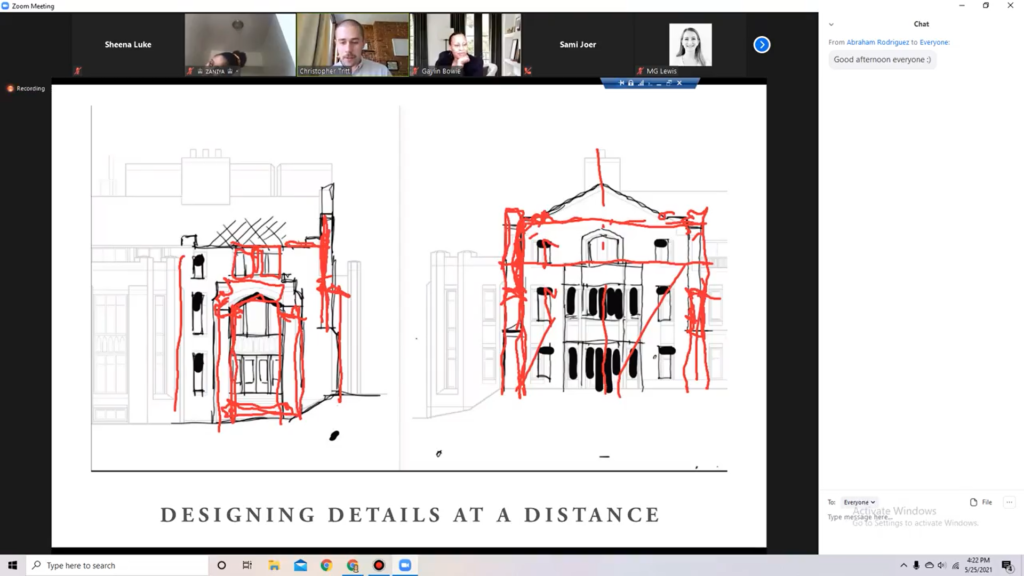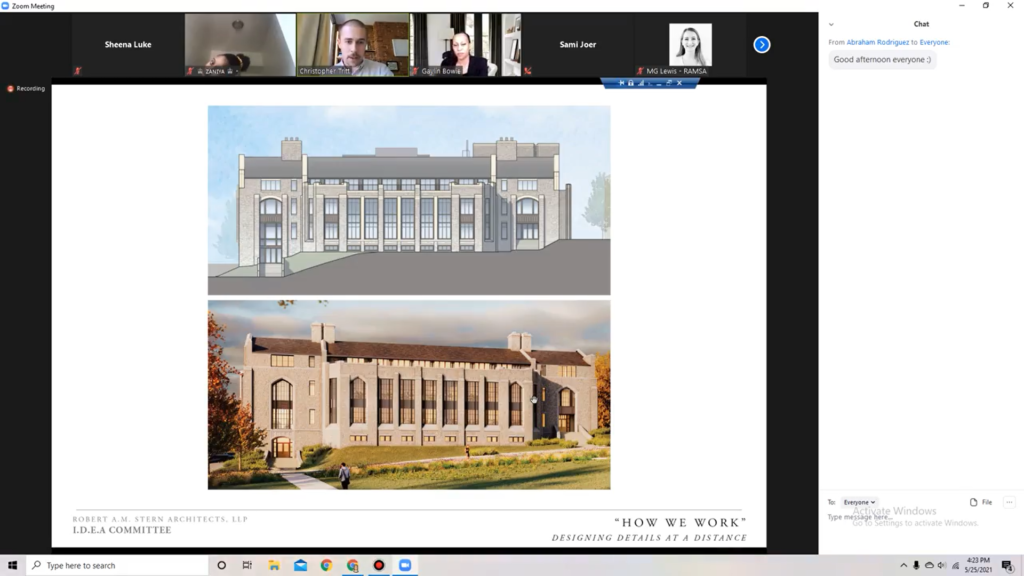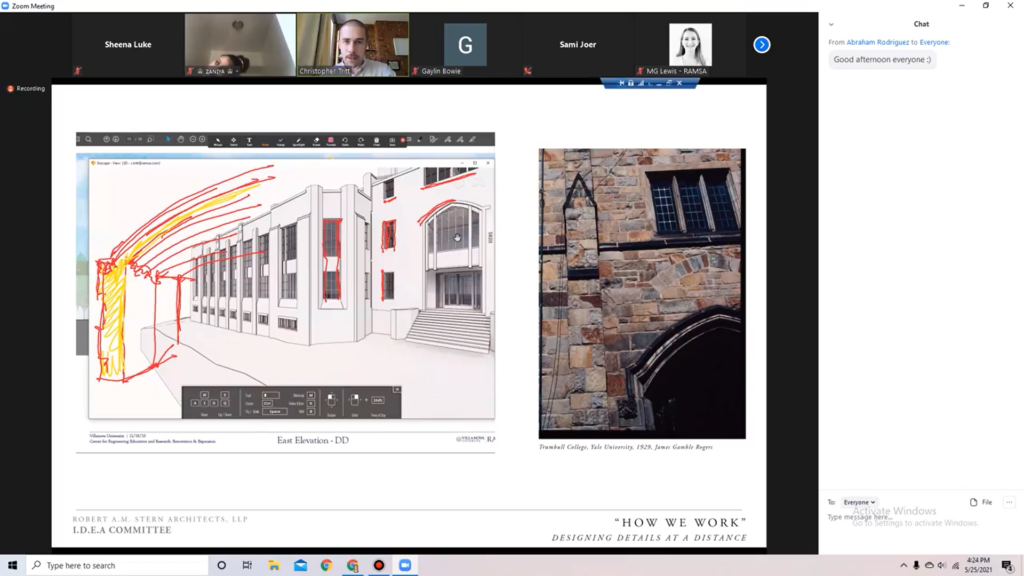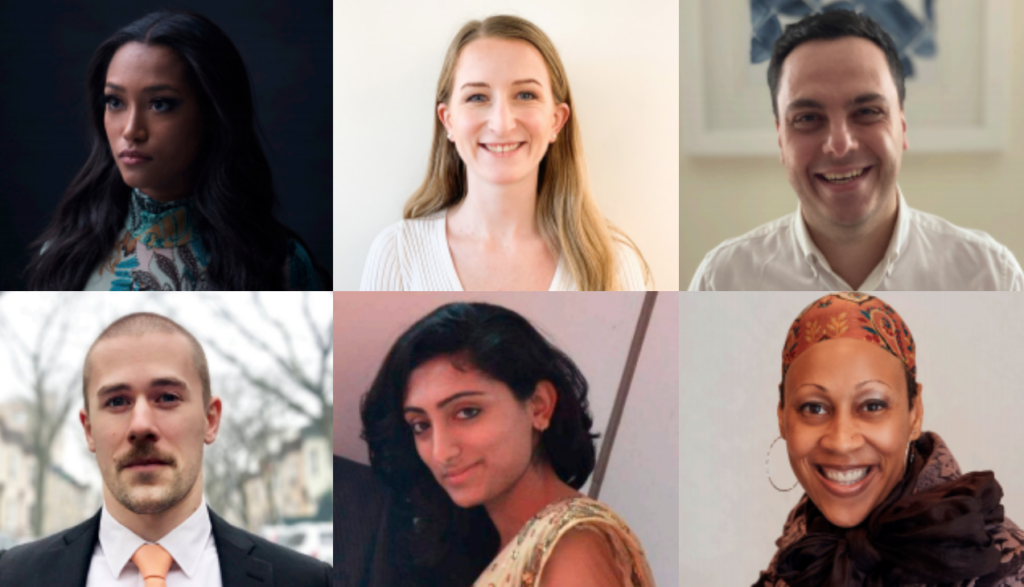
Amelia Velez
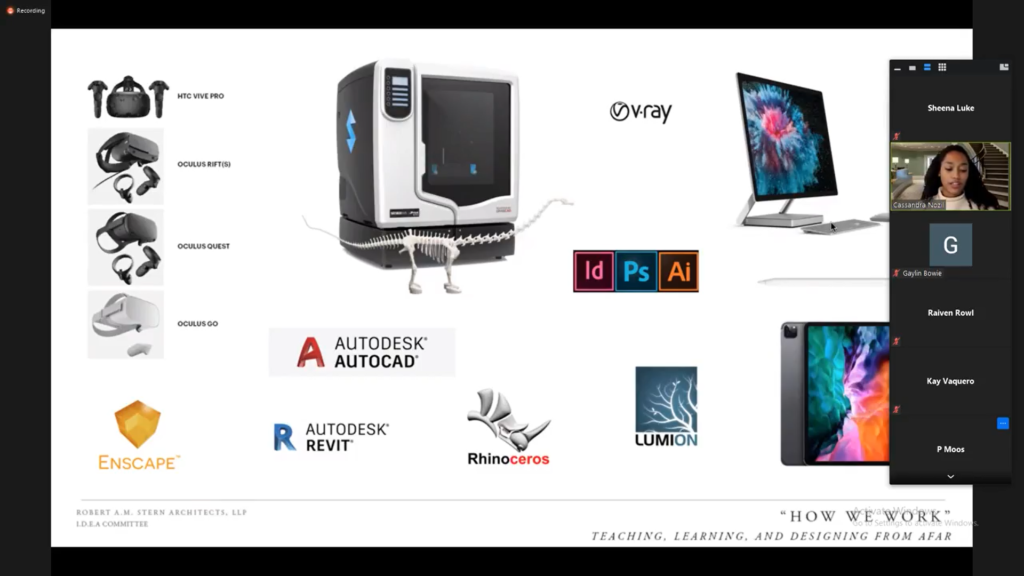
During RAMSA session 4, the session consisted of a panel of five different speakers, all managed by Ms. Gaylin M. Bowie. Each speaker focused on their specific job in RAMSA and how their jobs have been influenced by the current pandemic. The five main categories for the panel were; Teaching, Learning, and Designing from Afar – Presented by: Cassie Nozil, Hand Sketching in the Digital Realm – Presented by: MaryGrace Lewis, Massing Development – Remote Working Strategies – Presented by: Sami Joer, Designing Details at a Distance – Presented by: Christopher Tritt and Authenticity in Architecture – Presented by: Jincy George Kunnatharayil.
During the first presentation, speaker Cassie Nozil went over her experience with teaching both while online and in person. She went into detail about what she believed were the major pros and cons of teaching online were, to her. While presenting, she explained that she did not believe teaching online could fully equate to teaching in-person. The main reason for this being that she could not communicate with her students as well online as she could in person. Teaching online had created a type of mental teaching-block on her and her students as you can only do so much with different technological programs.
During the second presentation, speaker MG Lewis went over how instead of limiting her ability to sketch, being online actually expanded her world of drawing and sketching. While being online Ms. MG explained that she was able to learn more about the art of digital drawing/sketching and was able to incorporate digital drawing/sketching into her work and projects. She went on to explain that even when remote sketching is no longer required, she most likely will continue to practice drawing online as that is a new and interesting realm of possibilities to her.
The third presentation was held by speaker Sami Joer who explained his role in mass development and modelling. He explained that the pandemic had also expanded his ability to freely work and create models/renderings. Although working online did mostly benefit Mr. Joer’s line of work, it also created some unique challenges that he hadn’t originally expected. He quickly learned that if he was not careful, the newfound precision of modeling and rendering could have him wasting precious time on creating too many small precise details that may not have been of the utmost importance to the model.
During the fourth presentation, speaker Christopher Tritt explained that in his line of work, working online had not affected his job too greatly. Mr. Tritt explained that he has still been able to converse with his design team and has been able to continue figuring out the issues that might arise while completing the detailing of a building.
During the fifth and final presentation speaker Jincy George Kunnatharayil, went over how her job had become somewhat influenced by the ongoing pandemic and working online. One of the major things she stated that was particularly influenced was her ability to go on in person site tours/visits. When she was able to go to in person site visits, she was able to get a better grasp on what the client wanted from a building and what the outcome of the building might and would look like. However, even though that did prove to be a challenge, Ms. Kunnatharayil explained that it was her job to also work out different solutions to any problems that arose, so she created a solution to designing problems as she saw fit. Due to this she also added on that her personal ability of design had not been greatly hindered when working online.
Each speaker had a unique way of dealing with issues that arose from working online and with the ability of working in person coming back, they hope to continue working their way around problems that may arise in the future. Each speaker also showed how working in a strong team and creating strong bonds, not only with your team but also with your clients, can help you to overcome any obstacles that may be in your way of completing a project.
Matthew Zaczeniuk
On Tuesday the 25th, I participated in the 4th RAMSA session as a panelist for the first time, and let me tell you I had a roller coaster of emotions when going through the process of creating questions and talking to the mentors. I honestly thought that when presenting the questions that we (Amelia Velez, Kevin Garcia, and I) created would fail spectacularly, or we would mess something up. And although I’ve had a lot practice over the past year with presenting to stakeholders in the Makerspace, I still get very nervous before presenting and having the spotlight on me. However, despite my worries, the session went very well. In fact, I was surprised in the end by how fun and natural it felt to talk to the mentors and ask them questions about their specific niches and topics. I think that speaking to the mentors was an amazing experience and the outcome was better than I would have ever expected.
When I first heard that I was going to be a panelist for the up and coming RAMSA session, I was a little shocked that my teachers would have picked me. My thinking was that I wasn’t ready to do something like this. Although I had attended all of the previous RAMSA sessions, I was always on the other side, just sitting back and listening to the mentors and what they had to say. Now, knowing that I would be the one asking the questions made me nervous and I honestly didn’t want to do it. I had never done something like this before and it made me very hesitant to go through with it. The funny thing is, the 4th RAMSA session was scheduled to be on Tuesday, and I was informed that I was chosen to be a panelist on Monday! And while I know all my teachers had good intentions, I felt like I was being thrown on ice and told to skate for the first time. But once that fear started to settle down, I remembered that this might have not been so different from what I had done before in my Makerspace meetings. And so, I finally accepted the fact that I had to do this and kind of just winged it.
Creating the questions was another thing entirely, and it was kinda stressful when we were trying to come up with creative and complex questions to ask the mentors. Amelia, Kevin, and I all knew we had to create solid questions because what would a panel be without good questions? We wanted to spark conversations with our questions and engage with the mentors as much as possible, because we didn’t want to make the sort of baby questions that would just waste the mentors’ time. So with our combined brain power, or what was left of it after the 45 minutes we spent trying to think of appealing questions, and with the help of Mr. Rodriguez and Mr. Koestner, we succeeded in creating well thought out and intriguing questions. This process was more complicated and stressful than I thought it would be, but we got through it and were ready when the time came to start the conversation with great questions.
Presenting our questions to the mentors was the part where I realized this was going to be a great session. As the mentors finished their talks and we prepared to ask our questions, I got excited to engage with the mentors on a level I had never done before. Kevin started off with his first question, then I went, then Amelia, and it all felt amazing. Our conversations with the mentors felt so natural and it seemed to me like the virtual wall of screens just sort of disappeared. In the beginning when I would imagine the part of the meet where we would ask the questions, I thought it would feel very robotic, like we would ask the questions and the mentors would just simply answer, but it was much more than that. When asking questions it felt like we were having a real conversation, including the expressions and explaining the emotions mentors felt from our questions and the follow up questions. It just felt great to talk to them. So yes, I had a roller coaster of emotions and thoughts when going through the process of participating in the RAMSA session, but in the end I enjoyed it very much. Stepping on the other side was a welcome change for me, and I’m glad I got the chance to be there.
Kevin Garcia
What did you learn from the presenters?
On May 25th, Cassie Nozil, MaryGrace Lewis, Sami Joer, Christopher Tritt, and Jincy George Kunnatharayil, who are 5 of RAMSA’s architects, gave WHSAD students a presentation of their careers and answered a number of questions. During the “How We Work” presentation I learned about the role of design technology, digital hand sketching, massing development, design details at a distance, and authenticity in taking on architecture in a remote setting. The five presenters had to overcome the challenge of working from home. In a career like architecture, in which an environment filled with a group of people who have somewhat different or similar mindset is needed, the shift was a challenge for each one of them. I also learned that even after they encountered these challenges they found a solution for them. For instance, Cassie, who usually taught in person, had to start creating different types of presentation tools to teach. Issues she found during those presentations was the “absence” of her colleagues’ presences as when she prepared a joke but due to them being muted she would receive no reaction. Even after all these step backs and bumps in the road she picked up the skill of presenting a virtual model to the client and teaching a different way. During this pandemic, RAMSA picked up a new designer, Mary Grace, who’s been working nine months with RAMSA. She started her career from home during this experience. She talked about how she was introduced to digital sketching, and how she had to adapt due to the fact she’s someone who used to model on rough paper. One of the issues she’s going to face is that she is more used to working remotely in the work environment at RAMSA, but when going back she’s going back with her new digital sketching skill.
What did you learn about yourself? How did you feel about your performance and the dialogue you had with the presenters?
I was offered to be one of the moderators for this presentation in which I learned things about myself that I didn’t have the opportunity to notice before. I noticed that I’m able to read the room, carry some of my fellow moderators’ weight, and be able to interact with the presenters. When it comes to presentations, I would usually present and then the audience give comments and ask questions, but during this presentation, I felt like I was having some sort of conversation with the presenters. When it comes to doing things remotely there are many obstacles that we may face. For instance, my peer was not in a quiet environment, so I had to pick up some of his questions even if it interfered with our order. Our nerves can get the best of us, and I noticed that with another one of the moderators so I stepped up and asked their questions. I wasn’t perfect either way. I felt like my nervousness was causing me to not think thoroughly which caused me to stutter a number of times and work things in a matter that maybe wasn’t understandable.
Why is participating in such programs beneficial for you?
Participating in RAMSA’s pre-mentorship program is beneficial for me since I’m learning about different careers, the life of architects in those careers, and architectural firms. When it comes to finding my career, I still feel like a lost boy. I don’t know where I envision myself working, but when I see these presentations, I connect the dots of how professionals’ lives are and what they do. It helps me cross out fields in which I know I don’t envision myself working. In each one of these RAMSA’s session I have grown more interested in the firm from the friendly environment I can see through my computer screen, the diversity of the firm, and the amazing work which is presented during these sessions and on the RAMSA website.
Richard Hernandez
I would like to start off by saying that I believe what the people at RAMSA were able to accomplish and do during these times is amazing and brilliant. Listening to the presentations that were given by Cassie Nozil, MG Lewis, Sami Joer, Christopher Tritt, and Jincy George Kunnatharayil, I learned a lot about the process used by RAMSA when working remotely and found it fascinating the different ways they were able to make it work. I also think it’s awesome how RAMSA was able to use all of the resources available to them. Some of the resources they have used are AutoCAD, Autodesk SketchUp, Vr, Rhino, and Revit and because of their experiences with these programs, it made the transition to remote working easy and effective.
When listening to the different ways that the people at RAMSA used programs to sketch I thought it was innovative. When I heard that Photoshop was one of the tools used to sketch I was surprised. I never would have thought that it would have been used that way, but they were able to pull it off, and I was impressed with their creativity and utility of these programs. I also find it great how they were able to take the situation of working at home and not think of it as a burden but as an opportunity and find new ways to sketch that are more flexible than using pencil and paper. I am also glad to hear that when they start working in person again, they may continue to use some of the resources they found while working remotely.
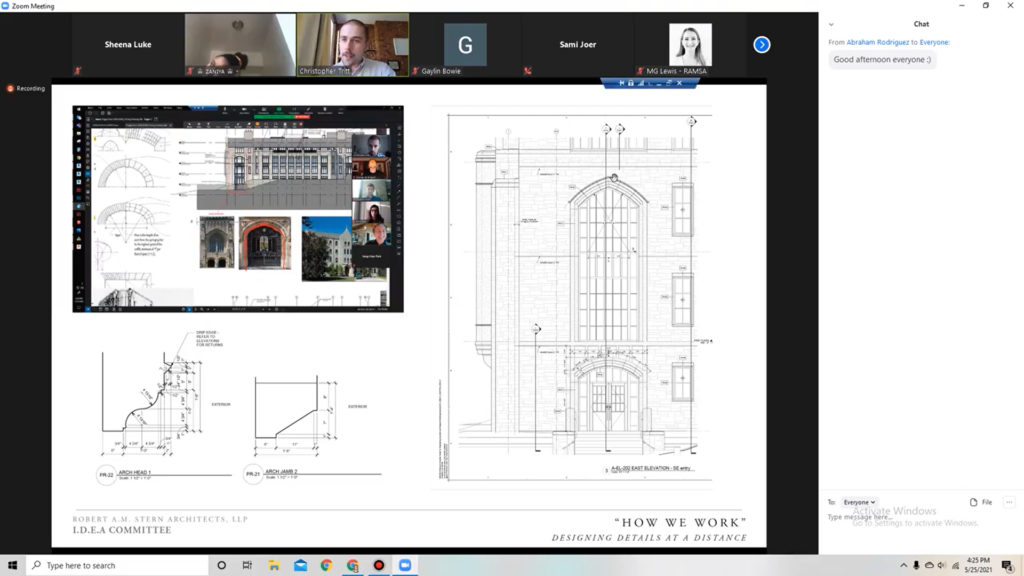
It’s nice to know that working remotely has led to the design process being easier in a sense that while in a Zoom meeting if anyone puts up a sketch, everyone can look at it at the same time and multiple people can have the ability to add edits and add ideas of their own onto the original sketch. I also find it awesome how sketches they do on the iPad come out looking so good and allows them to have more flexibility and that if they need to share their sketches, they don’t have to draw it all over again instead they can create a copy of the file and just send it to whoever needs it. While listening to the presentations given, I was able to learn a lot about what goes into making a project and what people are thinking about when making a project such as the purpose, value, integration, and consistency. I find this to be most helpful since I myself am currently working on a project so hearing about what should be going through someone’s mind when designing is helpful and I will definitely be using what I learned in this meeting in my project and any future projects that I might be working on.
I find it great how interactive and collaborative the people at RAMSA work and how working remotely has allowed them to find new and better ways to work. In conclusion, I am very impressed with the work RAMSA has done and will be looking forward to what they do next.
Raymundo Gomez
On May 25, 2021, employees from Robert AM Stern Architects gave us an intriguing presentation. They explained how they cooperated with each other, which was going to in-person meetings in the “pin-up boards”. It is a place where people come together and explain their work to get some feedback from their peers. They also show how they use clay models to help them create their creation. They told us that the clay models are quick to generate, and they could see its elevation faster to form an idea of how it would look in person. They also have done many sketches and explain that over one person can apply to different sketches. Each person would be assigned with specific colors to show their part of the sketches. They also explain that it’s not about planning but to have a perspective of what it will be in 3d.
What caught my attention would be authenticity in architecture. The word authenticity means “to be true” and the presentation showed to the class that every project includes context such as people, sites, surroundings, history, and culture. There are also 4 key areas of focus which are purpose, value, integration, and consistency. As architects, they must understand the context of their project and improve a person’s lifestyle.




